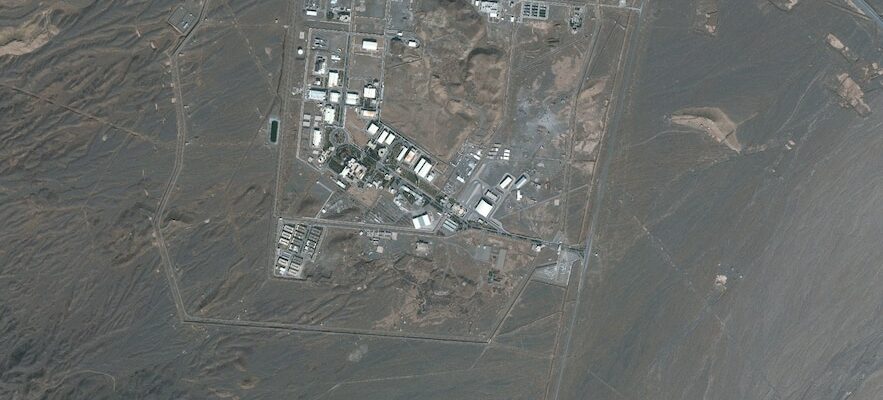Asked about their desire to develop a nuclear weapon, Iranian officials always answer the same thing: no, a fatwa dating back around twenty years from the Supreme Leader, Ali Khamenei, prohibits it. “The Iranian nation […] feels more than other nations the danger of producing and accumulating such weapons”, reaffirmed the leader of the Islamic Republic, in 2010, to the International Atomic Energy Agency (IAEA), responsible for monitoring the program Iranian.
All it takes is a decision from the Supreme Leader to change the situation. Has the time come? The question is unresolved, while the latent war which has opposed Israel and Iran for years is in an open phase. The Israeli armed forces have just regained a foothold in southern Lebanon to destroy the military capabilities of Iran’s main ally, Hezbollah, whose historic leader, Hassan Nasrallah, was eliminated in a strike. Tehran responded with a salvo of nearly 200 missiles on the territory of Israel, which promised that it “will pay the price”.
It cannot be ruled out that the Iranian regime opts for another type of response: the development of nuclear weapons. It has been carrying out a uranium enrichment program for several years, bringing it a little closer, every day, to the threshold allowing such an objective. To the point that it now seems impossible to prevent him from developing a nuclear weapon if he so chooses.
Iran already has uranium mines, reactors and engineers on its soil. It is also capable of enriching its uranium to 90%, the rate necessary to develop a nuclear weapon. In its August report, the IAEA indicated that Iran has officially accumulated 164.7 kilograms of material enriched to 60%, which may already allow it to have fissile material for more than three bombs. This prompted US Secretary of State Antony Blinken to say that Iran is “probably one or two weeks away from being able to do so”.
Aerial view of the Natanz nuclear center in central Iran on January 28, 2020, provided by Maxar Technologies
© / afp.com/-
These reserves are expected to continue to grow. Iran has slowly but surely continued its nuclear program since the United States withdrew in 2018, under President Donald Trump, from the JCPOA, the agreement providing for the lifting of international sanctions on Iran, in exchange for supervision of its atomic activities. It set the limit for the stock of enriched uranium at 202.8 kilos. It now exceeds five tonnes – a large part of the stock is enriched to 5% and 20%, above the civilian threshold of 3.67% set by the IAEA.
A few months to have a nuclear weapon
Having enough weapons-grade uranium is not enough to make a bomb. The Iranians already have ballistic technology – including certain missiles with a range of nearly 1,500 km – but they still need to master warhead technology. “The question that then arises is that of the armament timetable, for which the deadlines vary from 6 to 18 months,” explains Behnam Ben Taleblu, of the Foundation for Defense of Democracies think tank. “I am in the lower range, because the regime already has an active weapons program.” An analysis shared by Frazin Nadimi, of the Washington Institute: “The Iranians have developed certain technologies over time to have detonation systems and spheres in which to integrate the uranium.”
Until now, the regime has not taken this step, drawing strategic benefits from maintaining its atomic program in an in-between space: no longer truly civil, but not truly military. “It believes that it does not need nuclear weapons to achieve its strategic goals and in particular the protection of its territory against attacks, explains researcher Héloïse Fayet. They benefit from deterrence without possessing the weapon, of which the strategic cost would be higher. But this calculation may change depending on what the Israelis do.
The shift could occur, paradoxically, if Prime Minister Benjamin Netanyahu decides to carry out retaliatory bombings on the various sites of the Iranian atomic program. This would then be proof that the Iranian “in-between” has lost its dissuasive capacity. However, the regime has prepared for this: it has dispersed the sites of its program across its territory and buried its uranium enrichment plants deep underground, in Fordow and Natanz, to protect them against strikes with armor-piercing missiles. Added to this are sites which could be kept secret, that is to say unknown to the IAEA, which is already restricted in its inspections.
“Military strikes will not be enough to eliminate the Iranian nuclear program (too strengthened, too advanced, too dispersed), specifies in a post Daria Dolzikova, analyst at the London think tank Rusi. Rather, they will encourage Iran to further strengthen its sites and are more likely, compared to other retaliatory options, to push it to acquire nuclear weapons.” Iran could then reverse its fatwa, expel the IAEA inspectors and withdraw from the Non-Proliferation Treaty In the case of North Korea, such a decision preceded a first nuclear test by three years, in 2006. Pyongyang now has around fifty. bombs.
.
